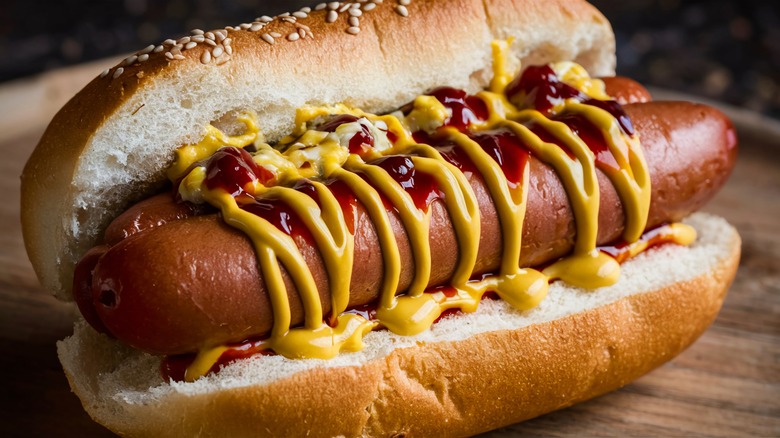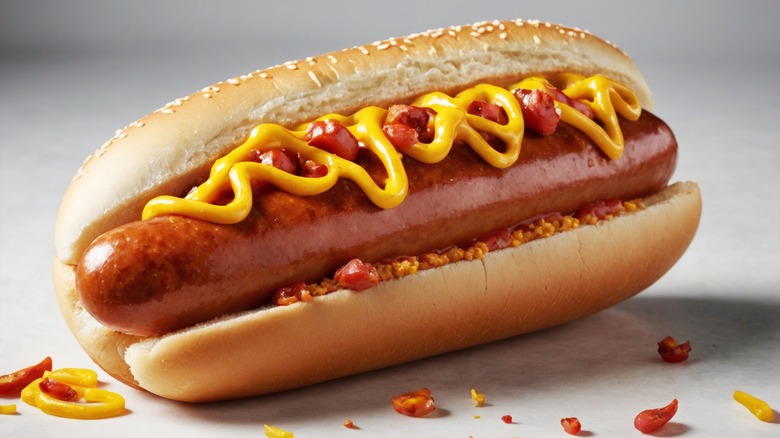Here's What's In Your Hot Dog, Beyond The Meat
Hot dogs are one of those special foods whose appearance doesn't give us much of a clue as to their ingredients. If you're like us, though, you're curious about all things food-related and unafraid of looking deeper into the components of both the best and worst hot dogs you can buy.
"Meat" is the obvious answer. Some franks are chicken, pork, or a blend of those meats. Others are all-beef, like the best Chicago-style hot dogs. Specifically, you'll find the trimmings of these meats in hot dogs — and no, that doesn't mean "the questionable parts," as old rumors would have us believe. Trimmings are the little bits left over from when meat is processed into steaks, breasts, thighs, and other cuts. That said, your hot dog may also contain some form of organ meat, such as the heart or liver. If it does, the label will include "variety meats" or "with meat by-products," followed by the specific variety of meat in question.
But, what about those mysterious ingredients that make a beef hot dog different from a stick of ground beef? Some wieners are cured, for one, and that involves a few chemical additions. They're tasty due to the addition of spices, and then there's that cylindrical shape. How does that happen? It turns out that it takes a few more components than just meat to make a hot dog a hot dog.
Ingredients in hot dogs besides meat
No discussion of hot dogs would be complete without talking about nitrites. Nitrites are chemical compounds sometimes used as a curing agent, effectively preserving meat, adding a pink color, and making it salty. The main difference between cured and uncured hot dogs boils down to the type of nitrites used in them. Cured hot dogs contain nitrites like potassium or sodium nitrate, while natural nitrites such as celery powder are used in uncured hot dogs.
Besides their meat and curing agents, hot dogs also contain spices such as sugar for browning, salt, coriander, garlic, white pepper, ground mustard, nutmeg, and paprika. Water is also added for mixing the meat and spices.
Finally, depending on what variety of hot dogs you're working with, they might contain a casing in addition to its meaty inner portion. The casing is the outer "skin" that gives the wiener its signature shape, not to mention that slight snap you get when you bite into some types of hot dogs. Like nitrites, there are natural and artificial casings. Many top hot dog brands use artificial casings made of cellulose, which are removed after the cooling processes, being inedible. Natural casings, which are edible and remain on the hot dog, typically consist of cleaned sheep or pig intestines, though there are also beef collagen casings in use, too. Which combo of casing type, spices, meats, and nitrites is "best" all boils down to your particular taste buds and needs.

